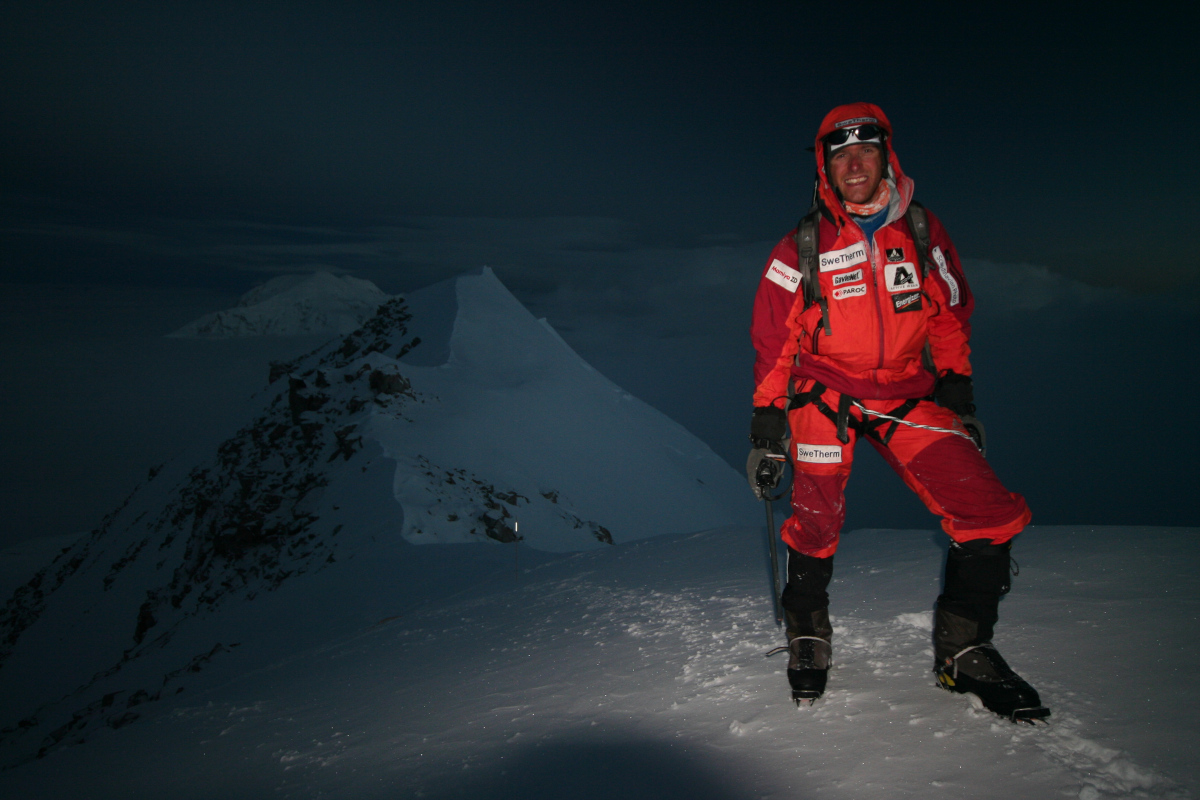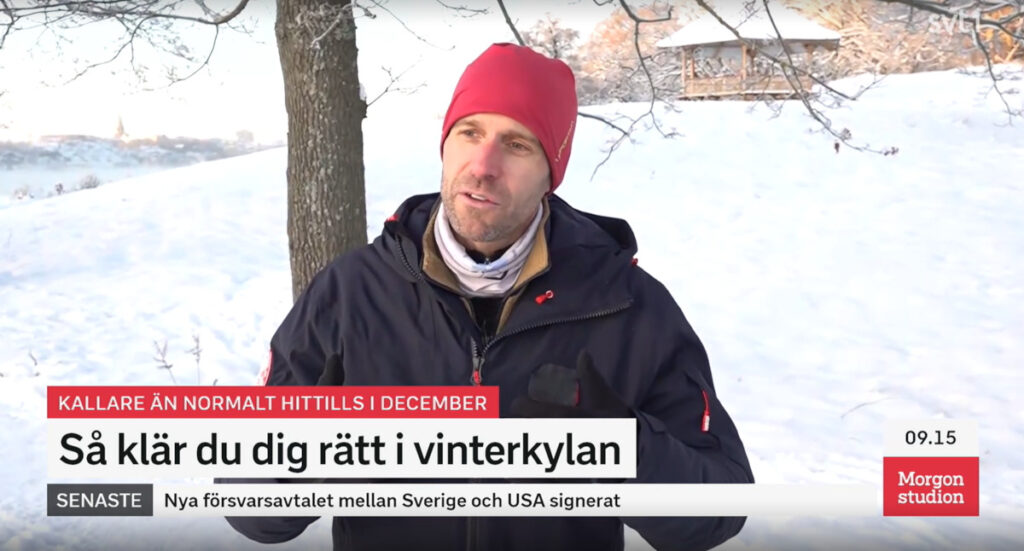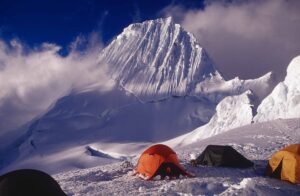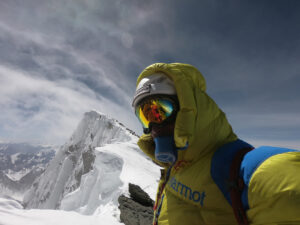In the winter chill, choosing the right attire is crucial to outsmart nature’s icy grip. Mastering the cold requires more than just being savvy with layering. Drawing insights from challenging storms in Alaska and Antarctica, along with the experience of standing atop seven 8000-meter peaks, I’ve learned the art of turning the cold from being an adversary to an ally. Here are some valuable tips how to dress right in the winter cold!
“Freezing means you’re either foolish or lazy,” exclaimed my lieutenant at I22 in Kiruna, Lapland’s Ranger Regiment. Foolishness lies in not knowing how to handle the cold, and laziness in remaining passive and still. Movement generates warmth, which, in turn, heats the clothing you’re hopefully wearing. Fortunately, there’s something one can do about being both cold-illiterate and indifferent. Believe me, you don’t need to be a survival expert to stay warm, as long as you stick to some basic principles:
The secret is “movement”
It’s the year 2000, and my friend Magnus Sundström and I are skiing in the exposed Arctic location called “Windy Corner” on the highest mountain of the northern hemisphere, Denali (6194 m) in Alaska. The thermometer reads -45 degrees this morning, and with storm gusts on top of this in this inhospitable environment, we have a wind chill of -69 degrees Celsius. It’s so damn cold that snot freezes into stalactites on the nose, pee turns to ice before hitting the ground in the morning, and it feels as if I’m a walking skeleton, detached from my flesh and blood. Had Magnus and I stayed at this spot, we wouldn’t have lived through the day. Our most effective weapon was, in the spirit of Winston Churchill, ‘When you are going through hell, keep walking!’
So when it’s bone-chilling cold, plan your journey between A and B and keep moving. Don’t stop. If you need to halt at a red light while cycling, keep moving. The tip here is the ‘penguin’ movement, keeping your arms straight and tight alongside your body, angling your hands and fingers perpendicular to your body. Now start ‘pumping’ your shoulders and arms straight up and down in an exaggerated movement without bending your arms. This method is more effective than the classic ‘ski-fire’ which involves violently waving your arms.
From head to toe
Did you know that at only -5 degrees Celsius, you lose 50% of body heat through the head? And at -20 degrees Celsius, a staggering 75%. Yet, Stockholmers dress as if for a conference on their feet, legs, and head and a polar expedition on their upper bodies. It’s nice to look neat in your hair, but if it’s a choice between that and not freezing, carry a comb to the office and wear a hat! Protect your neck with a buff or scarf too.
So, how does the famous ‘layering principle’ actually work? The purpose is to create more air gaps, not to warm the garments themselves. Your body generates heat, which in turn warms the air between and within the clothes. That’s why a fluffy down jacket ‘warms’ so well. So, the phrase ‘dress warmly’ is a misleading statement. It should be ‘dress well-insulated’, as garments with good insulation keep you warm.
Another tip is to wear shoes or boots where you can wiggle your toes, with a sturdy sole. Cold from the ground penetrates more easily through a shoe with a thin sole.
What clothes should you wear then? Cotton and cool max garments have a cooling effect, while wool and bamboo are warm. If I were you, I’d invest in thinner wool underwear to wear closest to my body. Another mistake many make is to wear a down jacket over a wind jacket or a Gore-Tex jacket. Then you risk creating a moisture barrier, leading us to the next tip.
“Sweat and you’ll die”
I am on Kilimanjaro for the sixth time, guiding. A Japanese man clad in a down suit struggles at 5000 meters altitude. I’ve just reached the summit and am heading down in the strong heat that arises when the sun rises above the horizon. I notice the Japanese man, completely drenched in sweat. He’s sweated through his down suit and lost a lot of fluids. Together with another guide, we come to his aid, instructing him to take off his soaked-down suit and prescribing a litre of salt replacement (1 teaspoon salt with 6 teaspoons sugar and bicarbonate/baking powder). We help the exhausted Japanese man down to the highest camp, Barafu Hut. He could have ‘sweated to death’ if we hadn’t come to his rescue. A worse scenario, which is not uncommon, is if you sweat when it’s below zero degrees outside. Then sweat freezes into ice, and the body cools down a bit like peeing in your pants on a freezing day. It’s comfortable at first, but then it gets cold! So, the saying ‘sweat and you’ll die,’ which we were drilled with during military service in Kiruna, is a reminder that if you overheat on a cold day, you must remove clothing to avoid sweating.
However, if you work or spend a long time outside, there’s a high risk that both socks and gloves will become damp. Changing to a pair of clean and dry socks and gloves is good. This small action can make a big difference! Also, remember that sweaty and dirty clothes have poorer heat insulation, so make it a rule to wash your clothes regularly.
Homemade tips
When I’m on expeditions, it’s not uncommon for the temperature to drop from a few degrees below zero in the sun to a drop of up to twenty degrees when the sun sets behind the mountains in the evening. The cold can feel like a slap in the face, and when you go to bed in a cold sleeping bag, it can be nice to bring two hard plastic bottles filled with boiling water and place them in the sleeping bag. One near the feet and one around the stomach/chest to heat the sleeping bag. Make sure you don’t burn yourself! A tip might be to put a wool sock over the bottle as a protective layer, so you don’t get it on your skin. This tip can also be applied to a bus stop on the way to work in the morning. Fill a bottle with hot water, such as a Nalgene bottle, and put it inside your down jacket. I promise you’ll be cosiest while waiting for the bus!
What clothes should I wear?
I use Smartwool underwear, a wool fleece jacket, and fleece and down jackets from Huski Wear. Contact me for discounts and advice on models that suit you and your needs.
Feel free to watch my segment on SVT Morgonstudion, where I share my thoughts on dressing for the cold and some homemaking tips. Fast forward to 3 hours and 13 minutes into the segment: https://lnkd.in/g-up6hzB
About Fredrik Sträng: Fredrik, in his leadership role, has climbed seven of the Earth’s fourteen 8,000m peaks, set a Guinness World Record, and lectures on leadership, communication, decision-making, and crisis management.
Sincerely
Fredrik Sträng
Alpinist – Speaker – Coach








